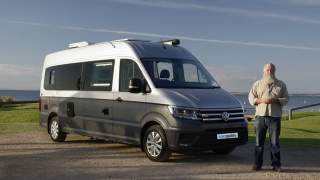In true Land Rover style, the 2021 Defender is available in many and varied forms.
In 110 guise, there is a choice of three engines: the D200 (a 2.0-litre i4 diesel, 147kW/430Nm); the D240 (a 2.0-litre i4 diesel, 177kW/430Nm); and the P400 MHEV (a 3.0-litre i6 294kW/550Nm petrol engine as part of a mild hybrid electric vehicle (MHEV) set-up – more about that later).
There are six trim levels: Defender 110, S, SE, HSE, First Edition and X.
There are nine variants: Defender 110 with the D200 ($69.626); the 110 with the D240 ($75,536), in S ($83,435), SE ($90,936), or First Edition spec ($102,135); and the P400 in S ($95,335), SE ($102,736), HSE ($112,535), or X spec ($136,736).

Unprecedented times have impacted the supply chain and there were no new diesel Defenders available to drive at the Aussie launch, or even available to buy in Australia until further notice, as demand has rapidly outstripped supply in the current global conditions.
The Defender will be available in 90 (not here yet) and 110 body designs, with up to six seats in the 90 and the option of five, six or 5+2 seating in the five-door 110.
As standard, the Defender gets a stack of gear including LED headlights, heated, electric, power-fold door mirrors, approach lights and auto-dimming keyless entry, cabin walk-through, auto-dimming interior rear view mirror, carpet mats, fabric eight-way heated semi-powered front seats
It also has 10.0-inch touchscreen Pivi Pro system, a smartphone pack (with Apple CarPlay and Android Auto), DAB radio, satnav, an online pack with data plan, and a 180W six-speaker sound system.

Driver-assist tech includes AEB, a 3D surround camera, a 360° parking aid, wade sensing, cruise control and speed limiter, lane keep assist, and traffic sign recognition and adaptive speed limiter.
The new Defender has a permanent all-wheel drive system with dual-range transfer case, electronic air suspension, and Terrain Response.
But, again, in true Land Rover tradition, Defender buyers are able to option up their vehicle with a multitude of accessories and Packs, which include grouped accessories to suit your particular bent, i.e. Adventure, Explorer, Country or Urban.
There’s a choice of 11 wheels across four sizes – from 18-inch to 22-inch – and that range includes the Defender’s old-school 18-inch white steel wheels, although I haven’t see any of those available here in the metal yet.

At launch, we spent the lion’s share of our time in an Indus Silver five-seater P400 S, which, as mentioned, has a manufacturer suggested retail price of $95,335, but its price as tested is $109,987, because it was equipped with a stack of optional accessories, including a $2740 comfort and convenience pack (with premium cabin lighting, front centre console refrigerator compartment, Meridian Sound System and wireless device charging), a $2086 driver assist pack (with blind spot assist, rear collision monitor and rear traffic monitor), 19-inch six-spoke, gloss black alloy wheels ($520) and more.
Exterior colour choices (satin protective wraps) include Pangea Green, Indus Silver and Gondwana Stone.






















